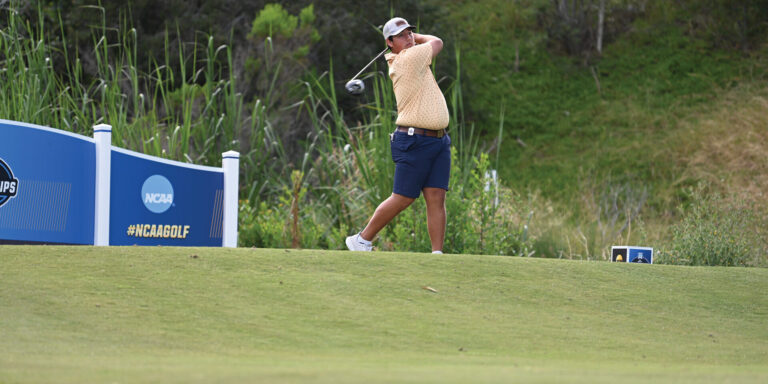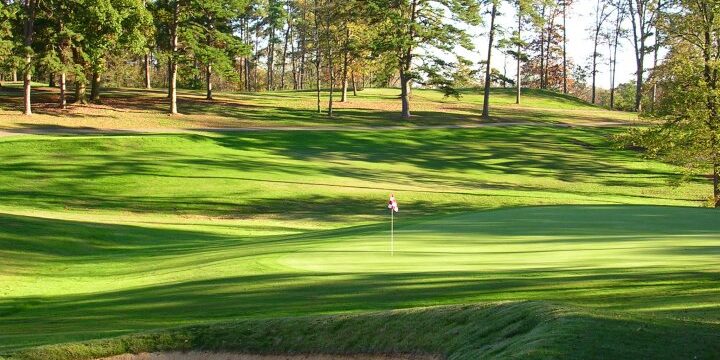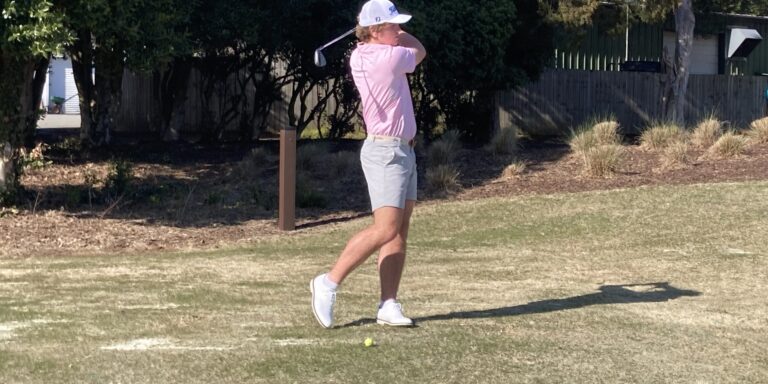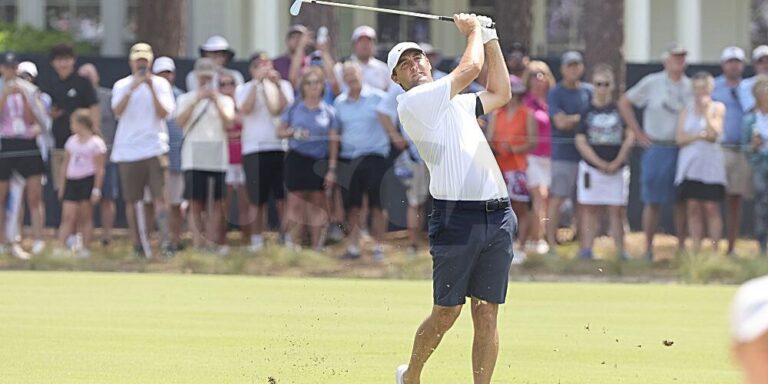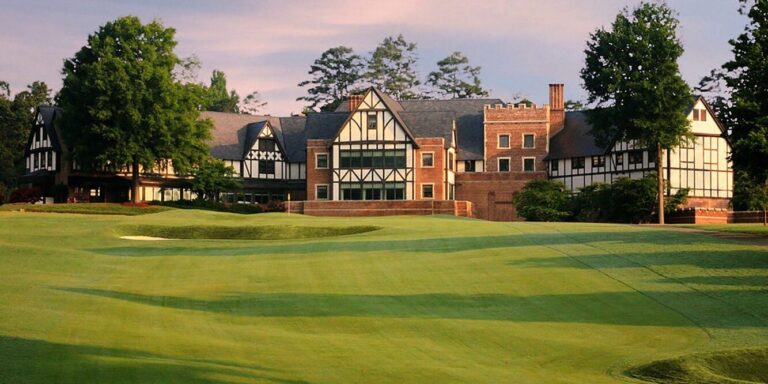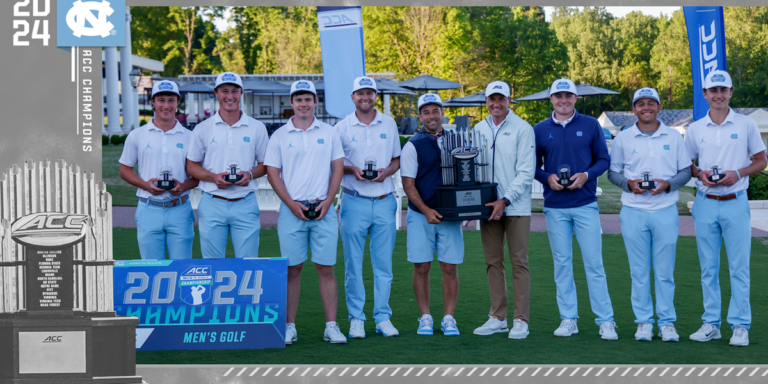Kelvin Hernandez thrived as an outsider in his first season at UNC Greensboro.
The freshman from Puerto Rico (pictured at the NCAA Championship in Carlsbad, California) came to Greensboro as not only the Spartans’ only player from outside of the state, but also as the team’s only player from outside North Carolina.
At the conclusion of his first season at UNCG, Hernandez became the first Spartan player to qualify for the NCAA National Championship. And he did it in thrilling fashion, shooting 67 with three birdies in his last six holes in the final round of the Austin (Texas) Regional to grab the tournament’s only individual berth.
UNCG, playing in its seventh regional in the last decade, had a solid performance, finishing in a tie for seventh in a 13-team field. But only Hernandez, who tied for third in the individual standings at 6-under-par 207 advanced to the finals in Carlsbad, California.
Sparked by a 5-foot eagle putt, Hernandez had grabbed a share of the first-round lead with 67 and stayed in position with 72 in the second round. Long off the tee, Hernandez earned the moniker “Mr. Chipinski” from his teammates by chipping in for birdie twice in the opening round and adding another in the second round.
In the final round, Hernandez couldn’t be sure where he stood in trying to qualify for Carlsbad. Players on the top 5 teams in the standings advance with only the top player from a non-advancing team moving on. With constant jockeying of teams for No. 4 through 6, it was impossible for individuals to know who the competition was.
Playing in the No. 4 spot for the Spartans much of the season, Hernandez got hot at midseason after reuniting with Orlando-based coach Patrick Leahy, who evaluated video and communicated with the player via Zoom and phone.
The stocky 5-8 Hernandez is one of UNCG’s biggest hitters off the tee.
“Right now, I’m hitting the ball a lot better than I was a few months ago,” said Hernandez. “My game has been going good for sure.”
“He’s been trending in the right direction the last 6 weeks,” said UNCG coach Terrance Stewart.
Making short birdie putts on 13, 14 and 17 after wedge approaches was more than enough for Hernandez to make up for a bogey on the final hole and grab the individual spot. Stewart didn’t tell Hernandez what score he needed but did advise him to make sure he stayed far right of a creek to the left of the green.
When he made his bogey putt, Hernandez heard his teammates yelling in celebration.
“That was the best tournament of his life,” Stewart said. “He’s an outstanding young man. Everybody on the team loves him.”
UNCG’s decision to host a tournament at Dorado Beach was a big factor in Stewart’s ability to recruit Hernandez, who began talking with Stewart during his junior year of high school and then was in attendance last year when the Spartans won their Puerto Rican event.
So, Stewart had an opportunity to meet Hernandez and his family in person. The coach said having first-hand knowledge about players is the reason his players are overwhelmingly from North Carolina.
With men’s college teams able to offer only 4.5 total scholarships, Stewart said he wants to know everything he can about recruits.
“We don’t want to have any guesses,” said Stewart. “It’s really hard to find out the ins and outs of the player.”
“I just fell in love with (Stewart) and the program and the guys on the team,” Hernandez said.
UNCG wasn’t the only school to know about Hernandez, who made several trips to Florida and Texas with his mother to play in junior events. Hernandez’s father, a physician, introduced his son to the game at early age.
But Hernandez said UNCG made a big impression. The closeness of the all-North Carolina team members also impressed his parents.
“They’re just great guys,” Hernandez said of his teammates.
Stewart said he knew Hernandez would be a “good fit” for his team. The coach said he hopes to get a “sprinkling” of more Puerto Rican players at UNCG in the future.
Stewart accompanied Hernandez to Carlsbad, where the competition was held at Omni La Costa North.
“That’s definitely the next step for us,” Stewart said of a UNCG player qualifying for the championship.


